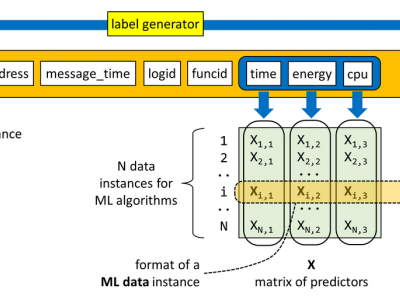IoT

Pictures and simulation file for the Zero dynamics anomaly behaviour paper is attached
- Categories:
 Views
Views
This project builds a length-versatile and noise-robust LoRa radio frequency fingerprint identification (RFFI) system. The LoRa signals are collected from 10 commercial-off-the-shelf LoRa devices, with the spreading factor (SF) set to 7, 8, 9, respectively. The packet preamble part and device labels are provided.
- Categories:
 1882 Views
1882 Views
Currently, Internet applications running on mobile devices generate a massive amount of data that can be transmitted to a Cloud for processing. However, one fundamental limitation of a Cloud is the connectivity with end devices. Fog computing overcomes this limitation and supports the requirements of time-sensitive applications by distributing computation, communication, and storage services along the Cloud to Things (C2T) continuum, empowering potential new applications, such as smart cities, augmented reality (AR), and virtual reality (VR).
- Categories:
 1391 Views
1391 ViewsIndustries transition to the Industry 4.0 paradigm requires solutions based on devices attached to machines that allow monitoring and control of industrial equipment. Monitoring is essential to ensure devices' proper operation against different aggressions. We propose a novel approach to detect and classify faults, that are typical in these devices, based on machine learning techniques that use as features the energy, the processing, and the time consumed by device main application functionality.
- Categories:
 1055 Views
1055 Views
The dataset used in the study consists of different IoT network traffic data files each IoT traffic data has files containing benign, i.e. normal network traffic data, and malicious traffic data related to the most common IoT botnet attacks which are known as the Mirai botnet.
- Categories:
 1334 Views
1334 Views
We used the traceroute tool to measure the routing of IPs in some areas. This dataset is the measured results.
- Categories:
 8 Views
8 ViewsTo gather the dataset, we asked two participants to perform six basic knife activities. The layout of the system experiment is provided in Fig. 4. As it illustrates, we put the receiver on the right side and the ESP32 transceiver on the left side of the performing area. The performing area is a cutting board (30 x 46 cm) in this experiment. Each participant performs each activity five times in the performing area.
- Categories:
 451 Views
451 Views
Human activity recognition (HAR) has attracted much attention. However, the existing HARs have shortcomings, such as few recognized activities, no identification, privacy leakage, and battery maintenance. Aiming at these shortcomings, this team has devised a body RFID skeleton that fully senses human activity and further proposes highly-accurate and fine-grained (total of 21 activities) HARs. The body RFID skeleton senses human activity by collecting tag response records of the skeleton node.
- Categories:
 31 Views
31 Views



